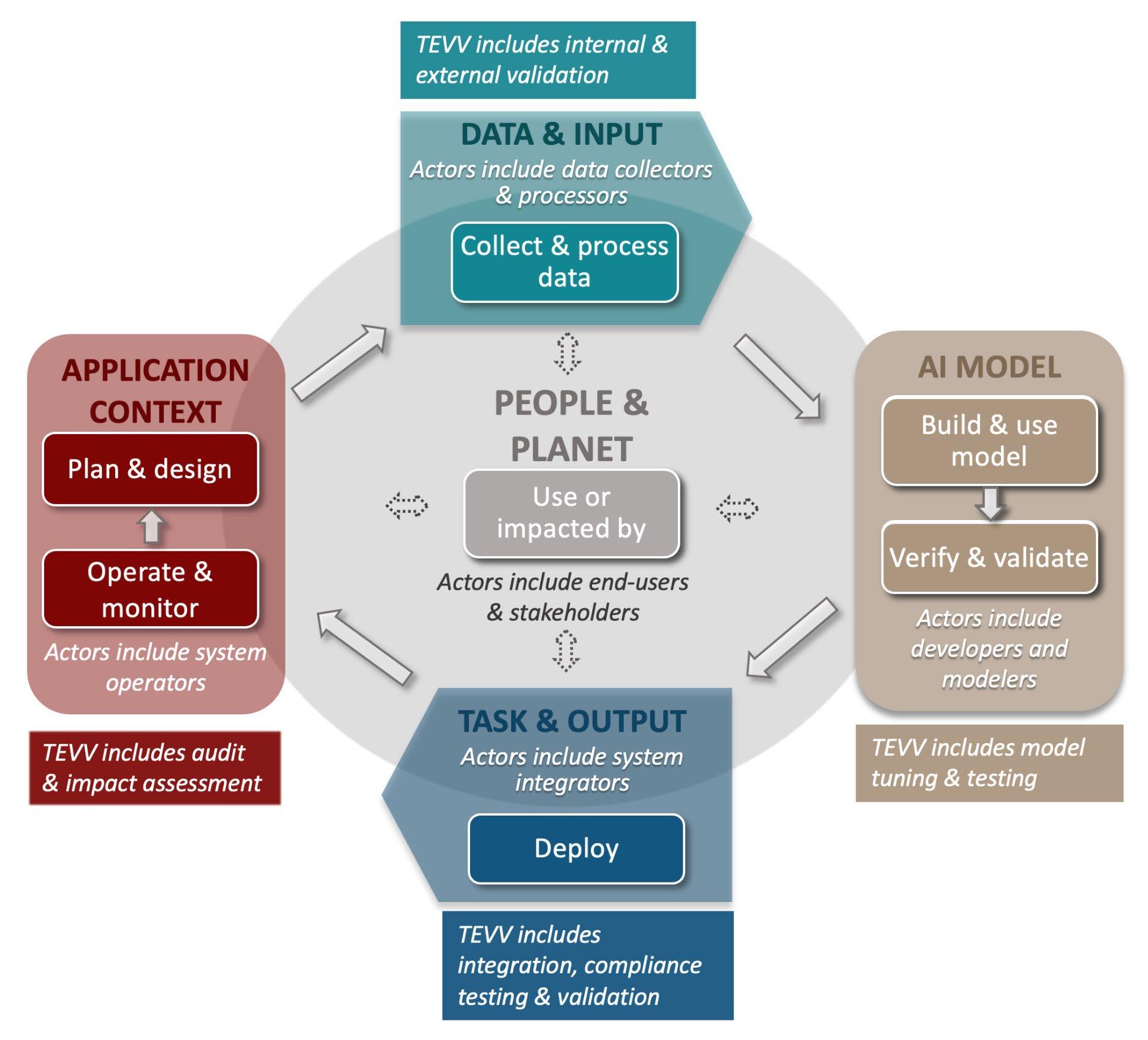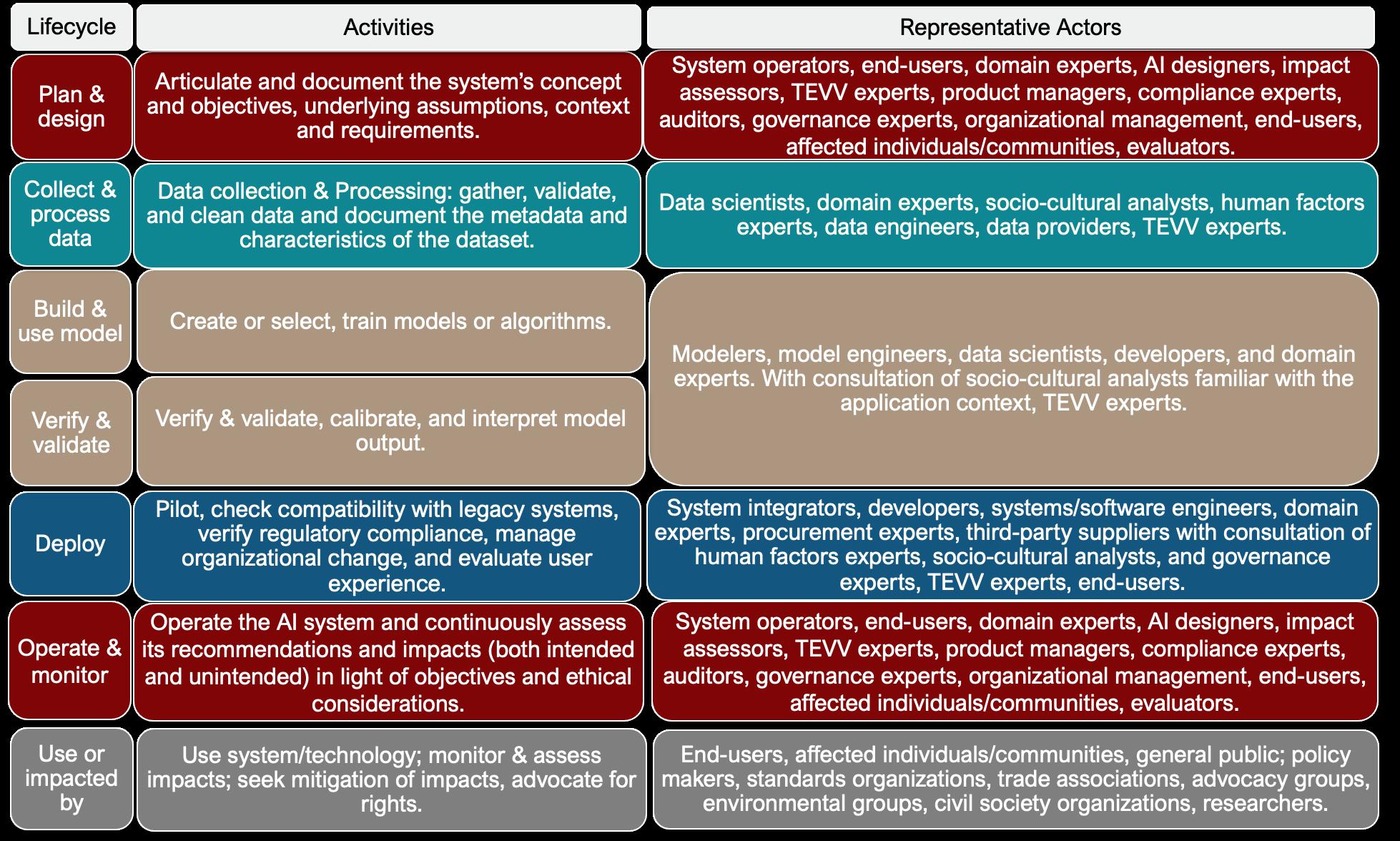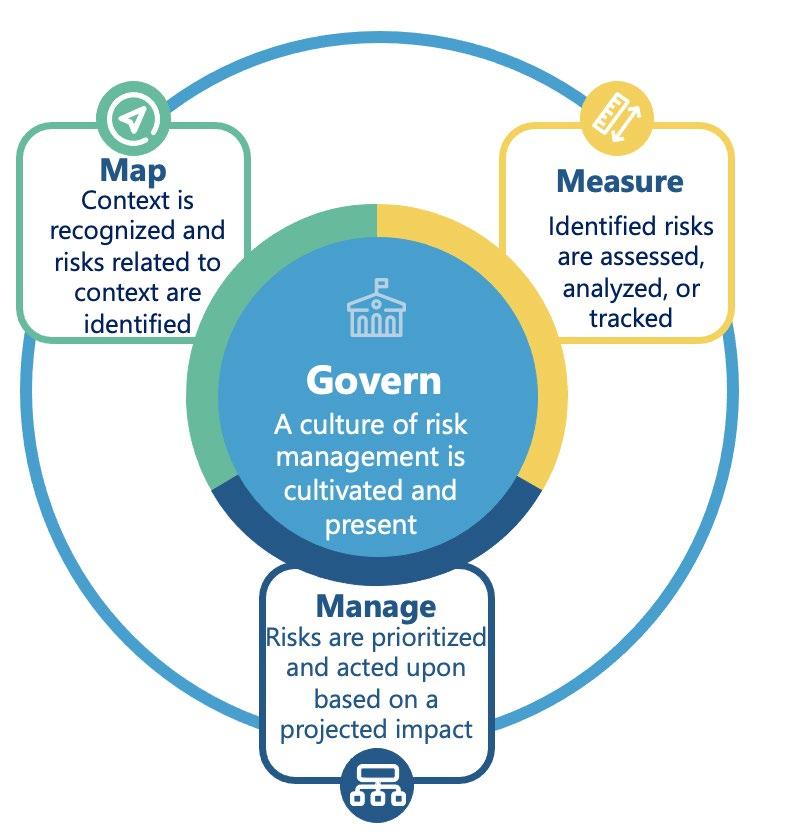
4 minute read
2. AUDIENCE
Attributes of the AI RMF
The AI RMF strives to:
Advertisement
1. Be risk-based, resource-efficient, pro-innovation, and voluntary. 2. Be consensus-driven and developed and regularly updated through an open, transparent process.
All stakeholders should have the opportunity to contribute to the AI RMF’s development. 3. Use clear and plain language that is understandable by a broad audience, including senior executives, government officials, non-governmental organization leadership, and those who are not AI professionals – while still of sufficient technical depth to be useful to practitioners. The AI
RMF should allow for communication of AI risks across an organization, between organizations, with customers, and to the public at large. 4. Provide common language and understanding to manage AI risks. The AI RMF should offer taxonomy, terminology, definitions, metrics, and characterizations for AI risk. 5. Be easily usable and fit well with other aspects of risk management. Use of the Framework should be intuitive and readily adaptable as part of an organization’s broader risk management strategy and processes. It should be consistent or aligned with other approaches to managing AI risks. 6. Be useful to a wide range of perspectives, sectors, and technology domains. The AI RMF should be universally applicable to any AI technology and to context-specific use cases. 7. Be outcome-focused and non-prescriptive. The Framework should provide a catalog of outcomes and approaches rather than prescribe one-size-fits-all requirements. 8. Take advantage of and foster greater awareness of existing standards, guidelines, best practices, methodologies, and tools for managing AI risks – as well as illustrate the need for additional, improved resources. 9. Be law- and regulation-agnostic. The Framework should support organizations’ abilities to operate under applicable domestic and international legal or regulatory regimes. 10. Be a living document. The AI RMF should be readily updated as technology, understanding, and approaches to AI trustworthiness and uses of AI change and as stakeholders learn from implementing AI risk management generally and this framework in particular.
Identifying and managing AI risks and impacts – both positive and negative – requires a broad set of perspectives and stakeholders. The AI RMF is intended to be used by AI actors, defined by the Organisation for Economic Co-operation and Development (OECD) as “those who play an active role in the AI system lifecycle, including organizations and individuals that deploy or operate AI” [OECD (2019) Artificial Intelligence in Society | OECD iLibrary].
OECD has developed a framework for classifying AI actors and their AI lifecycle activities according to five key socio-technical dimensions, each with properties relevant for AI policy and governance, including risk management [OECD (2022) OECD Framework for the Classification of AI systems | OECD Digital Economy Papers]. For purposes of this framework, NIST has slightly modified OECD’s classification. The NIST modification (shown in Figure 1) highlights the importance of test, evaluation, verification, and validation (TEVV) throughout an AI lifecycle and generalizes the operational context of an AI system.
Figure 1: Lifecycle and Key Dimensions of an AI System. Modified from OECD (2022) OECD
Framework for the Classification of AI systems | OECD Digital Economy Papers. Risk management should be continuous, timely, and performed throughout the AI system lifecycle, starting with the plan & design function in the application context. The broad audience of the AI RMF is shown in Figure 1. It is composed of AI actors with a variety of roles described below and in Appendix A who must work together to manage the risk and achieve the goals of trustworthy and responsible AI. The primary audience for using this framework is displayed in the Applications Context, Data & Input, AI Model, and Task & Output dimensions of Figure 1. These individuals and teams manage the design, development, deployment, and acquisition of AI systems and will be driving
AI risk management efforts. The primary audience also includes those with responsibilities to commission or fund an AI system and those who are part of the enterprise management structure governing the AI system lifecycle.

Figure 2: AI actors across the AI lifecycle.
Figure 2 lists representative AI actors across the AI lifecycle. AI actors with expertise to carry out TEVV tasks are especially likely to benefit from the Framework. AI actors with TEVV expertise are integrated throughout the AI lifecycle. TEVV tasks are foundational to risk management, providing knowledge and feedback for AI system management and governance. Performed regularly, TEVV tasks assess the system relative to technical, societal, legal, and ethical standards or norms, as well as monitor and assess risks of emergent properties. As a regular process within an AI lifecycle, TEVV allows for both mid-course remediation and posthoc risk management and mitigation. The People & Planet dimension of the AI lifecycle represented in Figure 1 presents an additional AI RMF audience: end-users or affected entities who play an important consultative role to the primary audiences. Their insights and input equip others to analyze context, identify, monitor and manage risks of the AI system by providing formal or quasi-formal norms or guidance. They include trade groups, standards developing organizations, advocacy groups, environmental groups, researchers, and civil society organizations. Their actions can designate boundaries for operation (technical, societal, legal, and ethical). They also promote discussion of the tradeoffs





